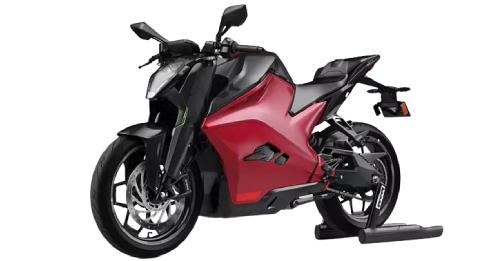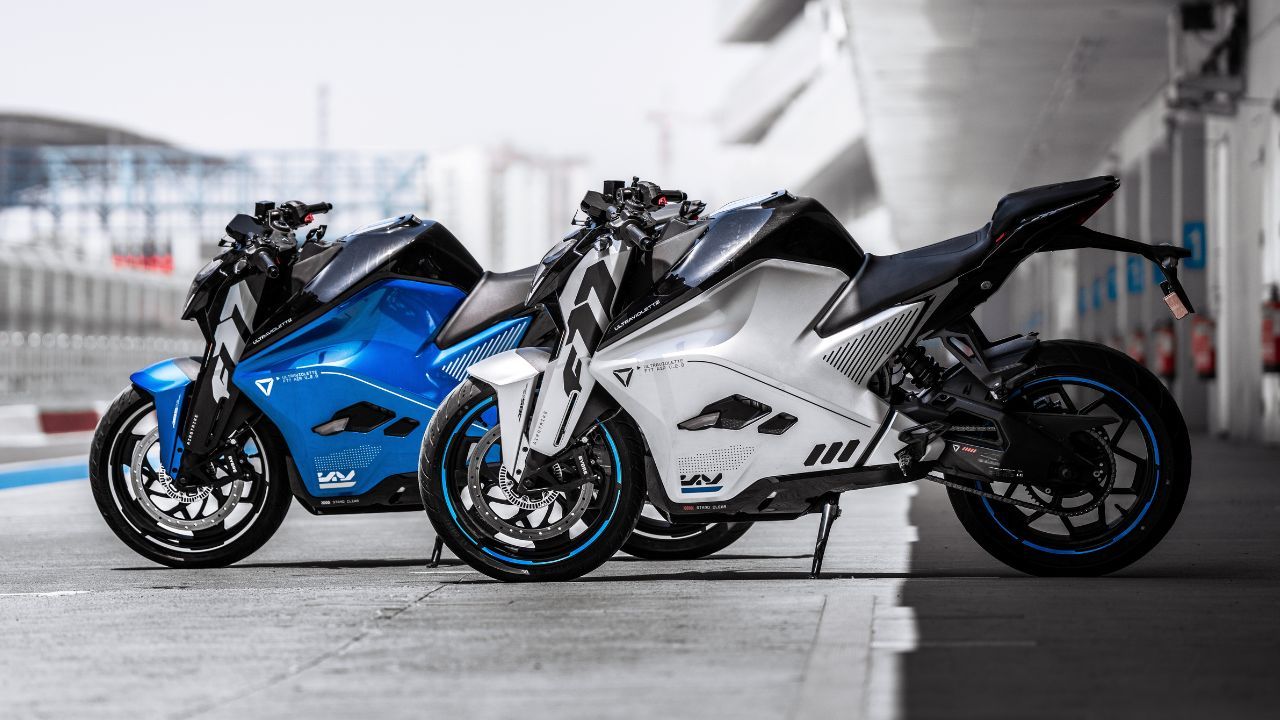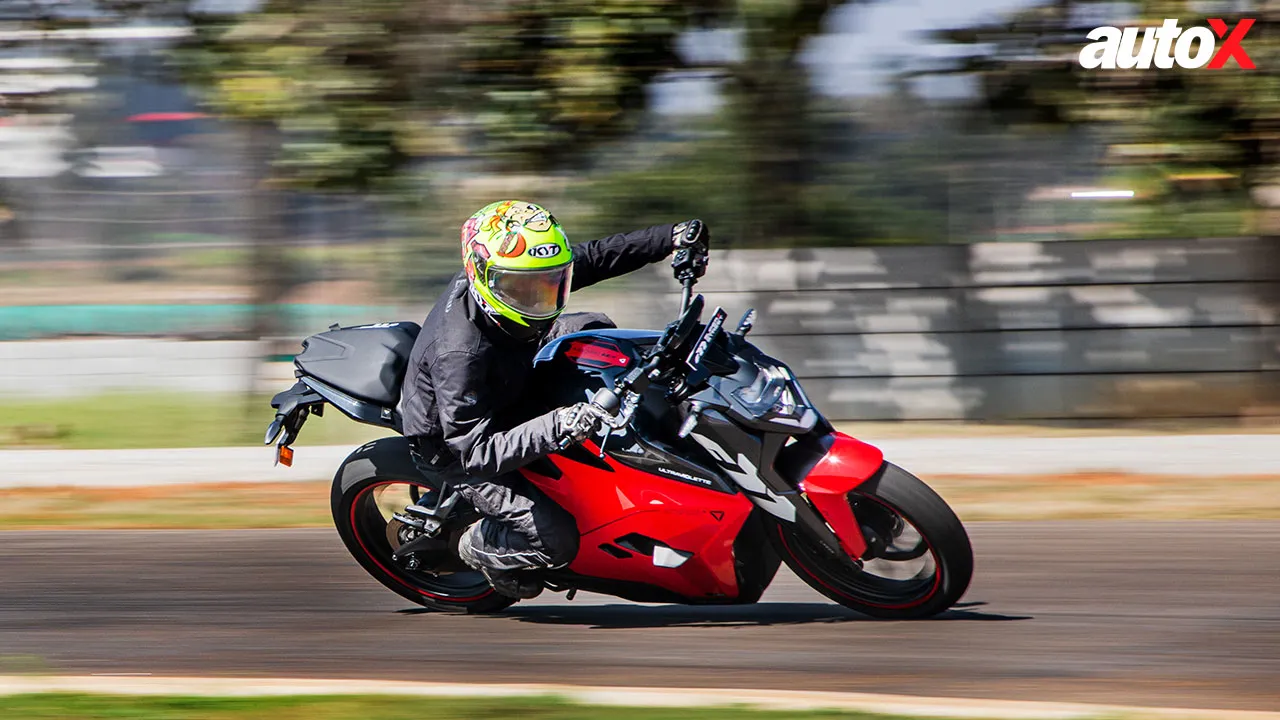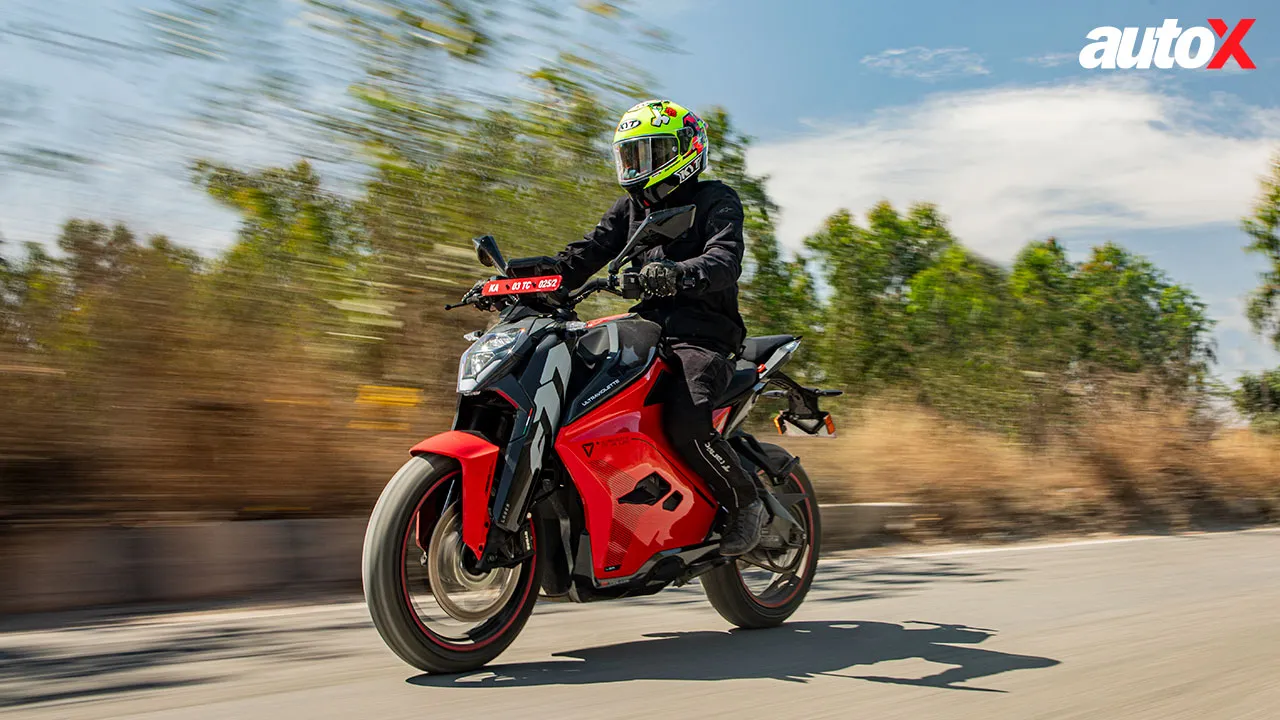Ultraviolette F77 Recon Review: Not Just An EV
At first, the idea of an electric motorcycle seemed absurd to me. Then, I rode the Ultraviolette F77… I am not going to lie to you. Going into the ride, I was thinking - there’s going to be no clutch or transmission to speak of, so exactly how much am I going to enjoy riding an electric motorcycle
By Dhruv Paliwal
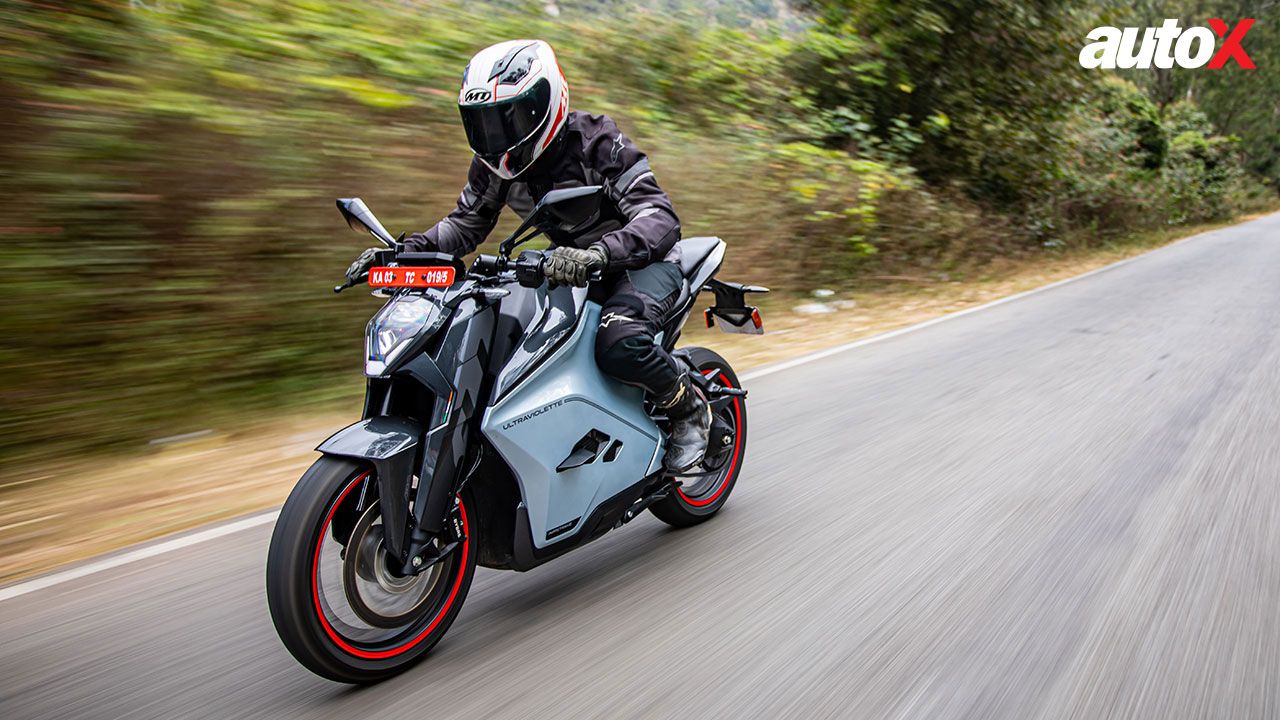
At first, the idea of an electric motorcycle seemed absurd to me. Then, I rode the Ultraviolette F77…
I am not going to lie to you. Going into the ride, I was thinking - there’s going to be no clutch or transmission to speak of, so exactly how much am I going to enjoy riding an electric motorcycle? The short answer to that question is - quite a bit. You see, while Ultraviolette gets ready to deliver the F77 to customers, as a company, it has existed since 2016. That means a lot of time and effort has gone into making the F77 what it is. And what exactly is it? In my opinion, it’s a motorcycle first and an EV second.

How quickly do you adjust to the Ultraviolette F77?
In five minutes, or a couple of kilometres - whichever comes first! The first couple of times I was coming to a full stop, I found myself reaching for the clutch. In the case of the F77, the clutch and gear lever do not exist. But having reached for the clutch and the gear lever a couple of times, I found myself getting used to the throttle-and-brake configuration quite quickly. One thing that I appreciated was the fact that the rear brake is still where you would find it on a conventional motorcycle - under your right foot. Just for the sake of design uniformity, they haven’t stuck it on the handlebar where the clutch would be - like a scooter. Everything else, like the switch gear and even the instrument cluster, all feel very familiar, and in fact, the controls on the F77 fall to hand very easily. Not just that, they feel quite robust and most of the buttons on the handlebar have a reassuring feedback. Therefore, it's easy to operate them even while riding the motorcycle.

How demanding is the riding position on the Ultraviolette F77?
The first time you swing a leg over the Ultraviolette F77, it feels a little intimidating. The handlebar is low down, the foot-pegs are quite rear-set, and you end up having to lean forward to properly sit on the motorcycle. Shorter riders might find the seat height a bit tall, and at more than 200 kg, the F77 is on the heavier side - at least on paper. You feel the weight, but only when you are moving it around from a standstill, or when you come to a hard stop and immediately stick your foot out to stop the motorcycle from falling over. That’s it. Every other time, the Ultraviolette does well to mask its weight. All-in-all, once you take a few minutes to adjust to the asks of the Ultraviolette F77, it gets pretty easy to ride. However, ride it for long hours or hustle it around corners (which you will read more about soon) and the committed riding position will start taking its toll on you.
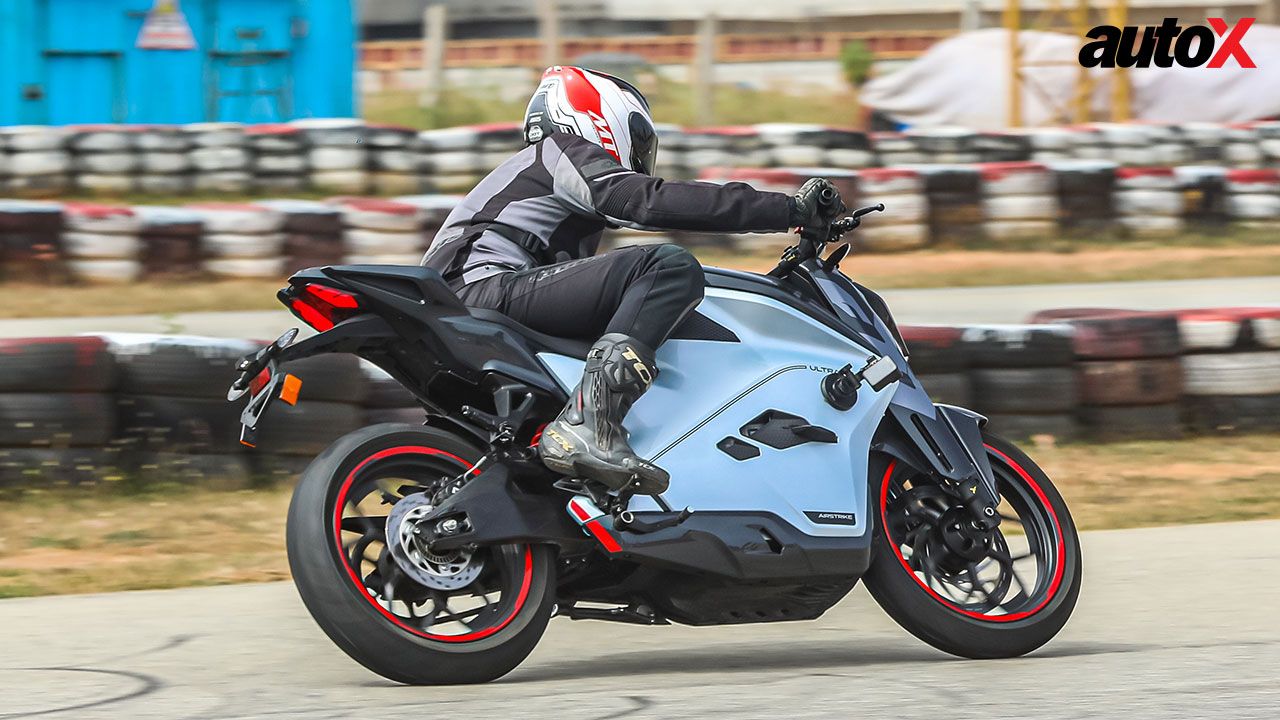
How’s the power delivery on the Ultraviolette F77?
For many of you, including me, this is going to be the make-or-break characteristic of the F77. Can it create an experience visceral enough that you don’t miss the internal combustion engine? Well, yes. First of all, the Ultraviolette F77 is not as silent as one might expect. The electric motor spins a reduction gear and that makes a whiny noise that increases in intensity as the speeds climb. It’s no inline-four but in my honest opinion, it’s something I can live with. Will I come to love it? That, only time will tell.
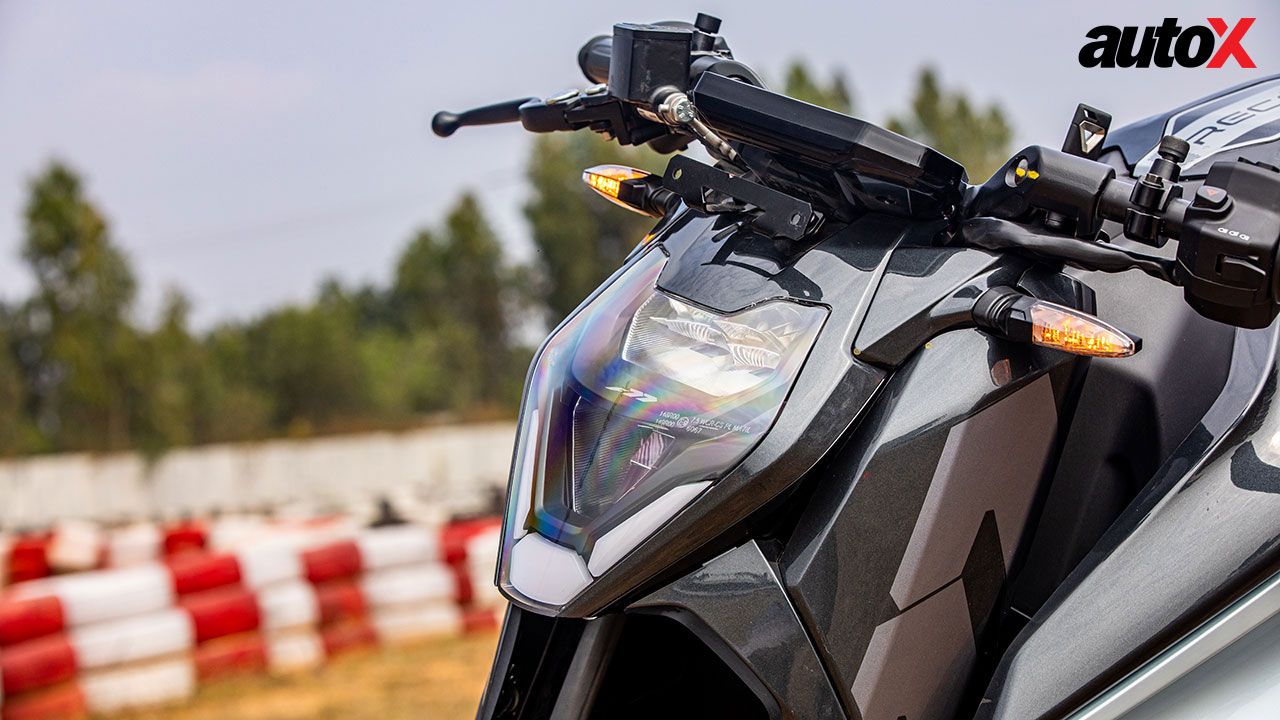
As far as the power from the electric motor is concerned, you have got three riding modes - Glide, Combat, and Ballistic. All three modes offer a good low-down response, although Glide is limited to 80 km/h and isn’t the best choice if you like to dart into gaps. Combat is good when you don’t want to destroy your range but still want to have fun, but ultimately, it’s the Ballistic mode that most of you will love on this motorcycle. Power delivery is quite linear in all modes, but it’s the throttle calibration that makes the F77 stand out. Feed in the throttle at any given speed, and the motorcycle responds naturally. What’s not so good is the regeneration (or regen in short) as even in its highest setting, you can barely feel any regen on the motorcycle.
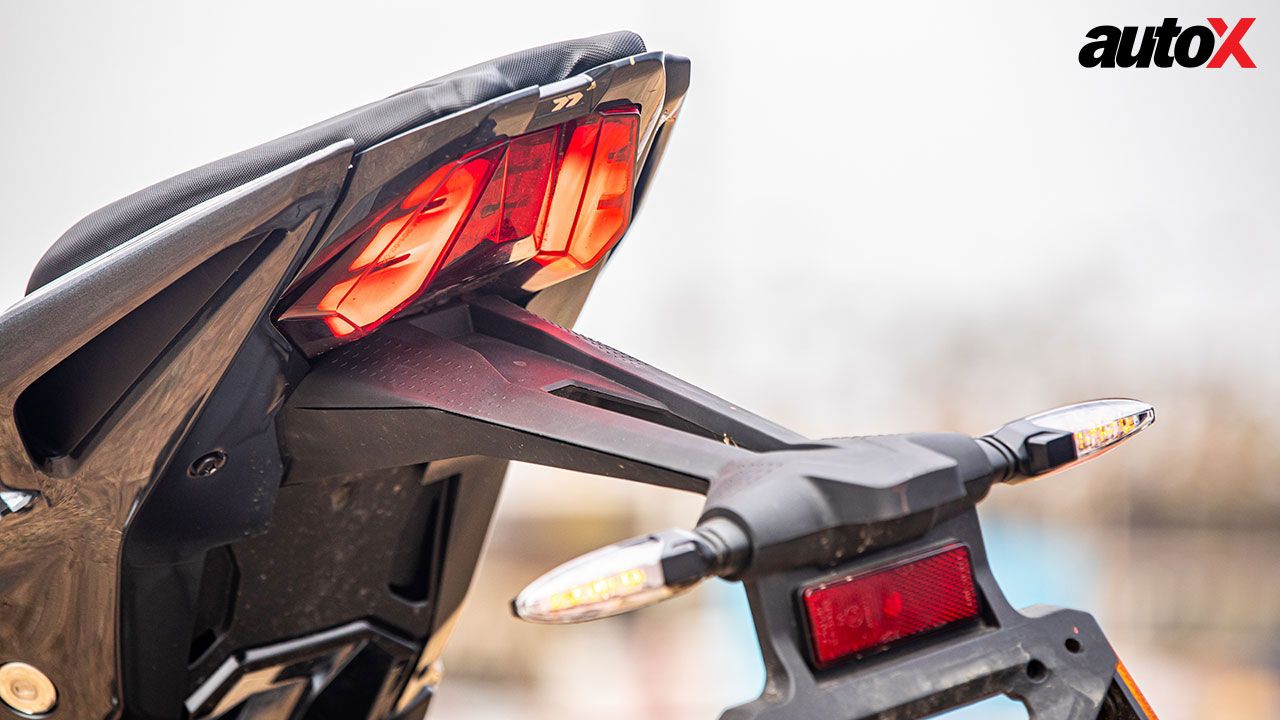
Ultraviolette has said that it is working on multiple regen settings for the F77, and once they are homologated for the motorcycle, they will be introduced at a later stage. For now, the absence of regen will rear its ugly head now and then, especially if you like to naturally slow down using engine braking when approaching a corner.

How does the Ultraviolette F77 corner?
This is the part where you fall in love with the F77. Despite its weight, the folks at Ultraviolette have made sure that the F77 stays neutral when you are giving it the beans. First up, the motorcycle stays stable even when you start nearing its claimed 147 km/h top speed. The tyres have been developed in conjunction with MRF, especially for the F77, and they are one of the reasons why the F77 feels so stable. No matter how aggressively I whacked open the throttle, the tyres stuck to the tarmac like a leech, and they behaved similarly in the corners. For a part of the ride, we got to enjoy the F77 on a go-kart track and no matter how much I leaned on the front-end of the motorcycle, it just refused to give in an inch. The rear had a similar story to tell, although as lean angles increased lap-after-lap, you could feel it twitch on exits just a tad bit. Not enough to soil your underpants, but enough to put a big wide grin on your face!
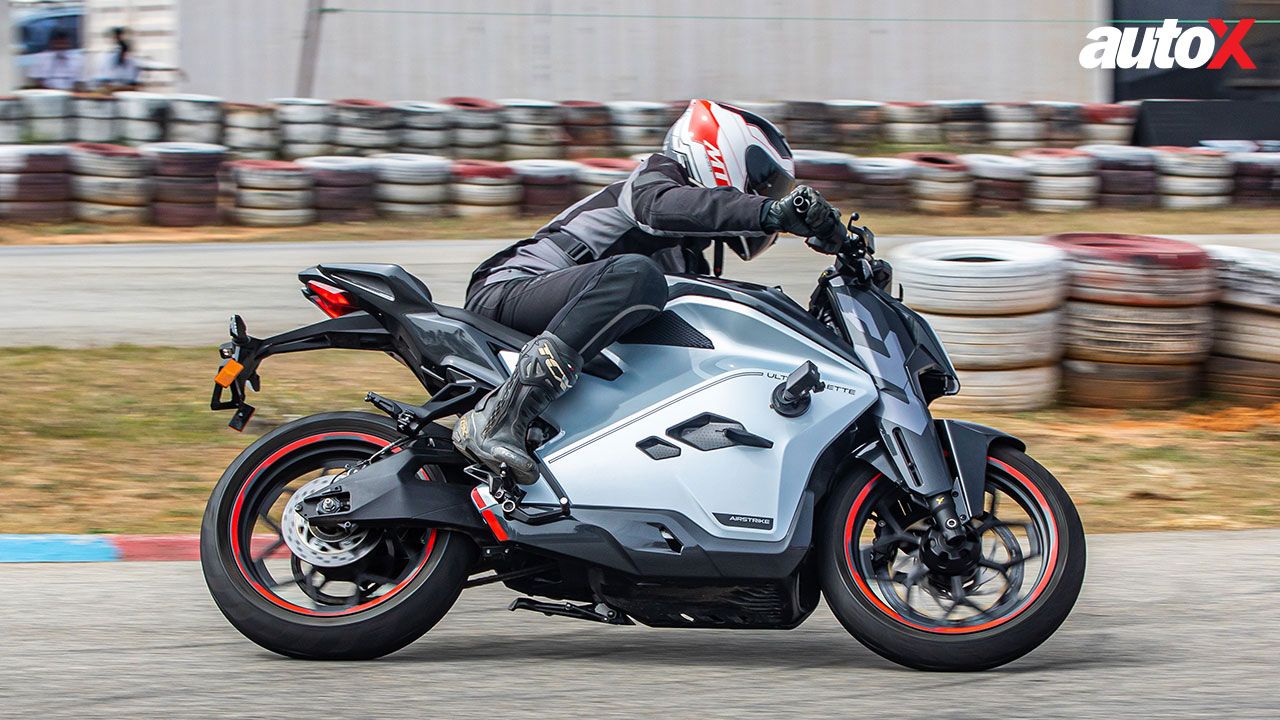
As far as the brakes go, you have a single-disc setup at both ends, but at the front, Ultraviolette is offering sintered pads. They make a decent amount of noise and offer loads of feedback, but with the amount of grip in the tyres, I could have done with a front brake with more stopping power. The rear brake feels very inert in the way it engages, and for most of the ride, I preferred using the front only.
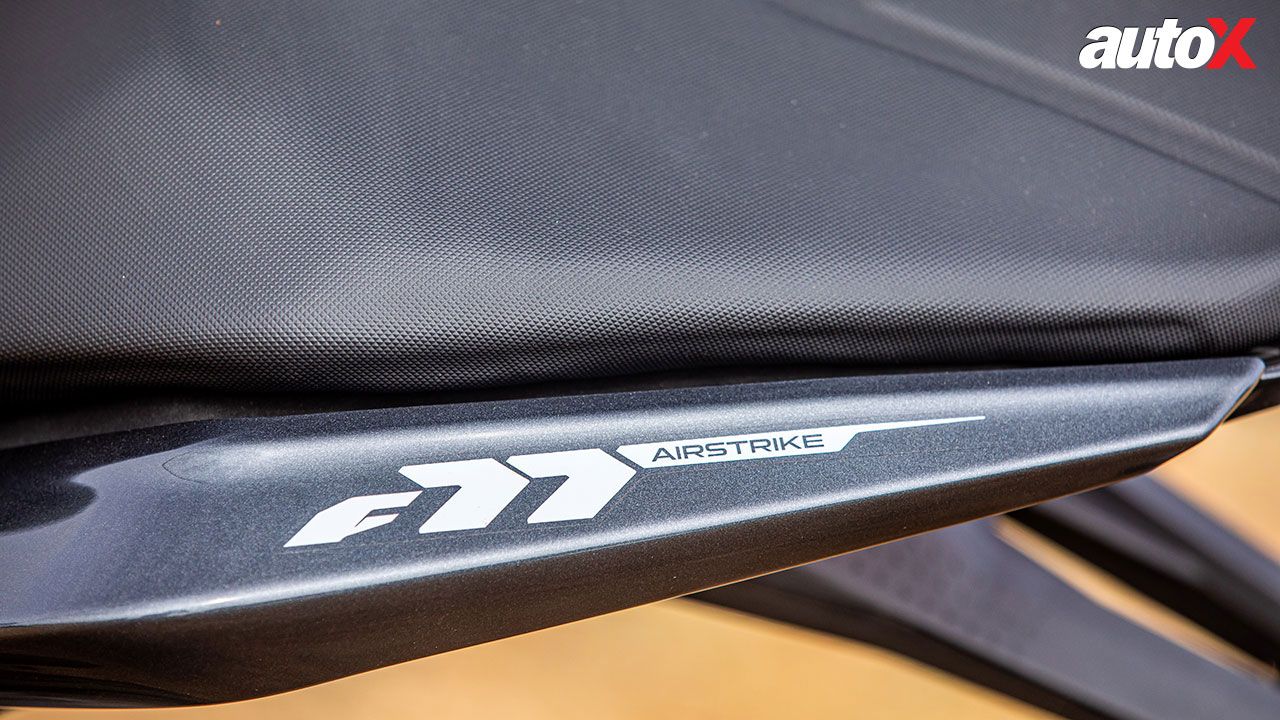
The suspension is pre-load adjustable at both ends, hence, you can dial it in as per your exact weight to extract the most performance from the motorcycle The setting provided to us worked well for most parts. The chassis, while pretty solid, isn’t actually dripping with feedback, and at moments I did find myself wondering what the motorcycle was doing underneath me, but ultimately the sticky tyres mean there aren’t many surprises. If you do end up buying the F77, we advise that you go for the optional tank grips as they make a world of difference when leaning into corners, or even braking hard for that matter.
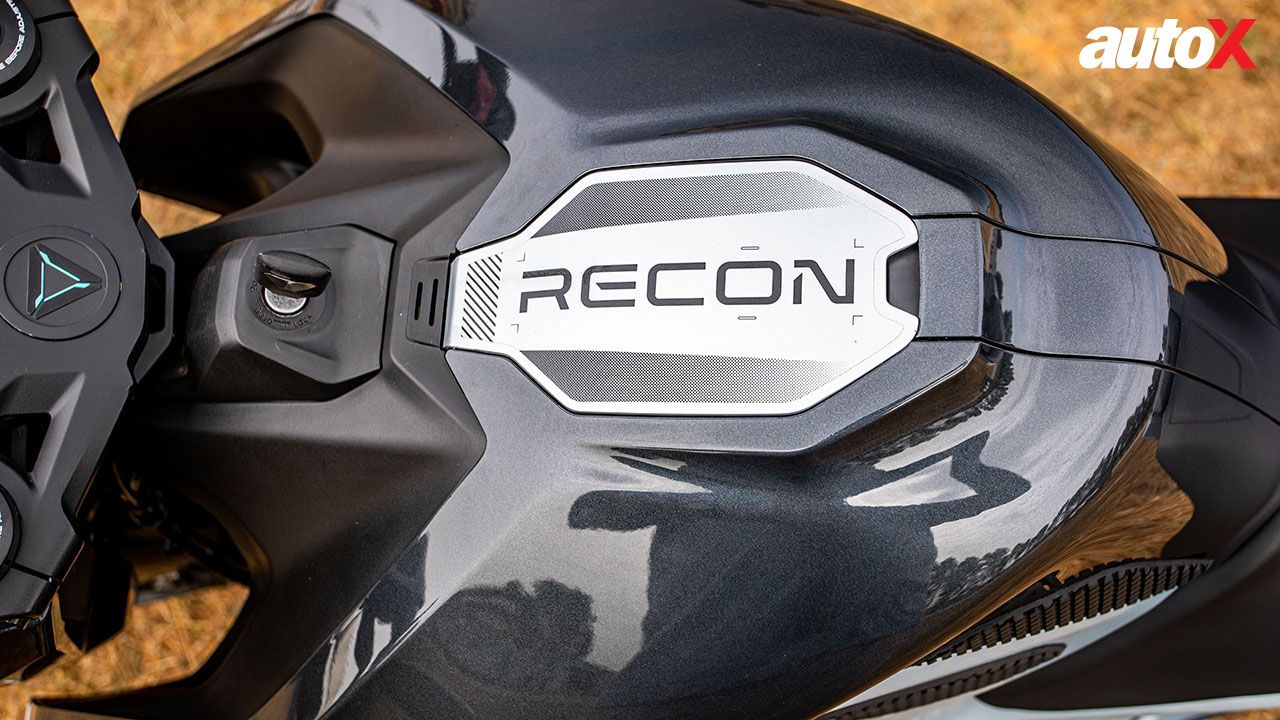
Should you buy the Ultraviolette F77?
Coming to the practical bits, the Ultraviolette will be more demanding to ride than your everyday street-nakeds and even some small-displacement sport bikes. As far as the range goes, while we didn’t test it in a real-world fashion as half of the ride was on a track, if you end up being relentless in Ballistic mode, you can expect anywhere between 120 to 150 km per charge. That’s not bad, but it does mean that the F77 isn’t built for highway rides. That is if you don’t get the optional panniers which can even pack in one of the express chargers for the F77. When it comes to charging, Ultraviolette says that the F77’s battery pack can offer 35 km of range in one hour of charging when using the standard charger. The express charger can up that number to 75 km.
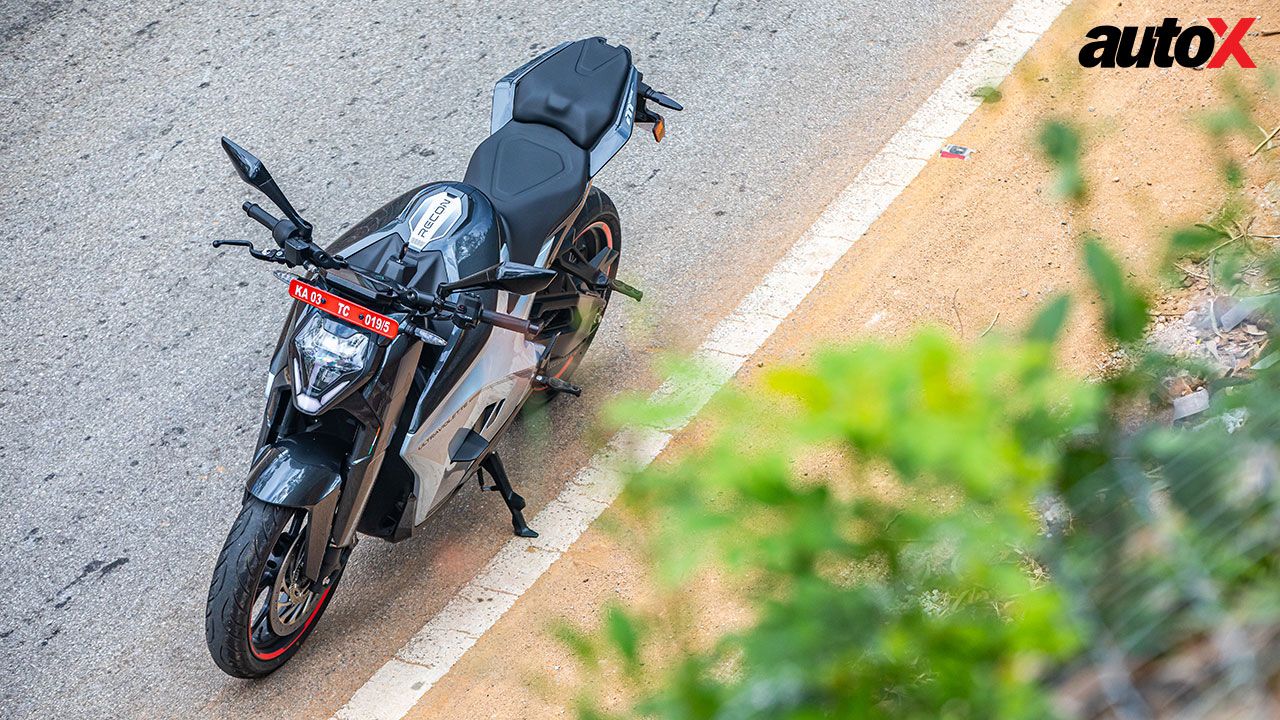
If you are a touring buff, maybe hold on for now. For everyone else, go for it - that is, if you don’t mind the absence of a conventional transmission in your motorcycle. If you can get over that bit, then the Ultraviolette feels like any other motorcycle on the road. The best way to sum up the Ultraviolette F77 would be by saying the same thing I said in the beginning, that it’s a motorcycle first, and an electric vehicle second.
Motor: Permanent Magnet AC Motor
Battery: 10.3 kWh Li-ion
Power: 38bhp
Torque: 95Nm
Range: 307kms (IDC)
Price: ₹4.55 Lakh (Ex-Showroom)
X-Factor: Stunning looks, sporty handling and an electric drivetrain - all combined into one neat little motorcycle.
|
Pros • Handling |
Cons |
